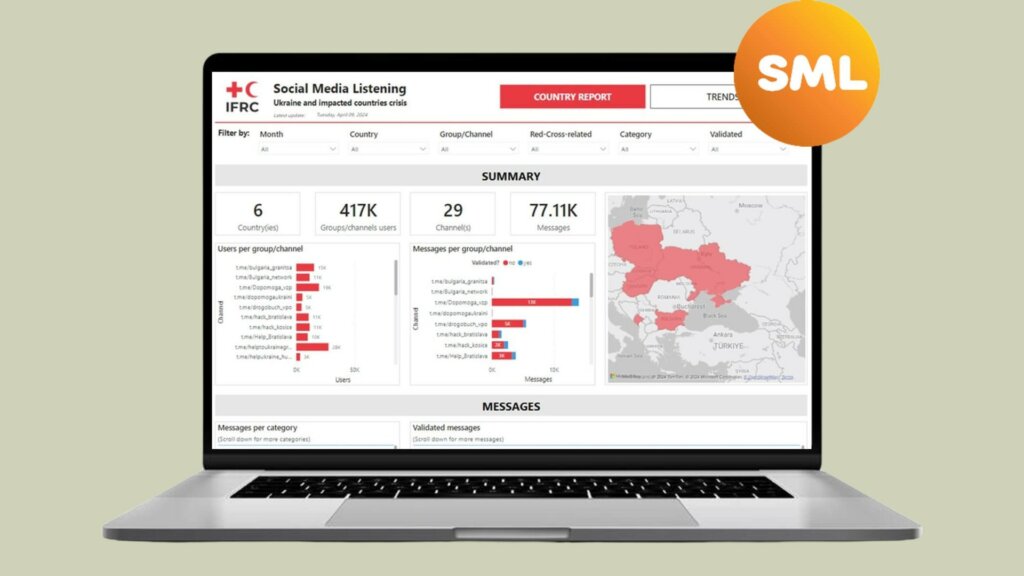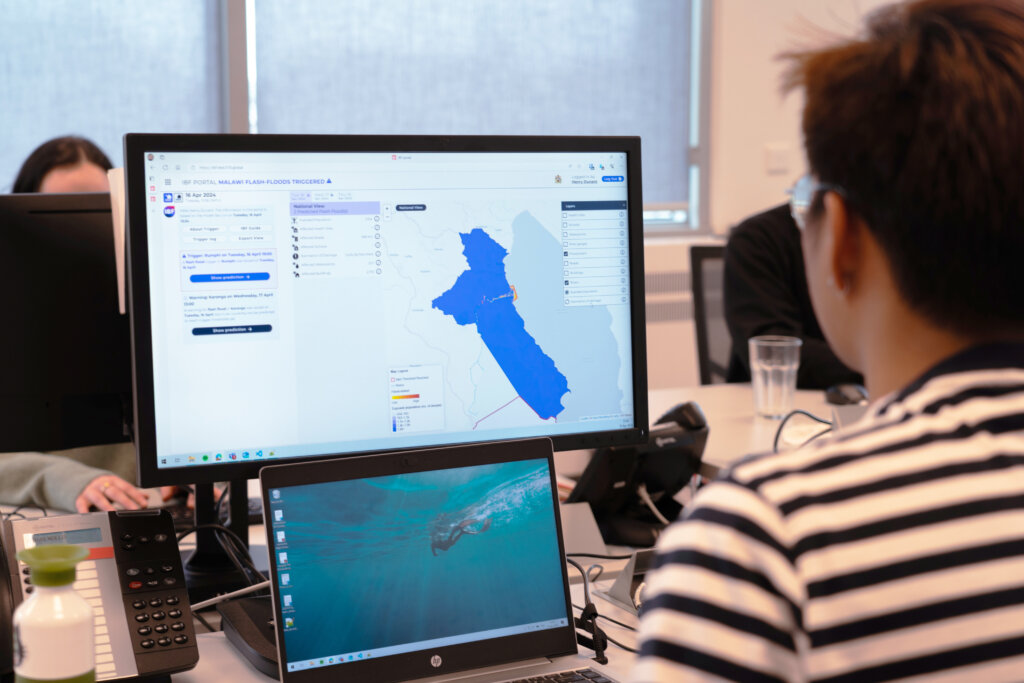
The storm is brewing over your city and leaving a destructive trail of flood-related damages. Affected communities, including your neighbours, are sheltering while you and fellow staff and volunteers are busy with preparations to mitigate the storm’s impact and support communities.

DEH continues to be an important tool. Contacting the helpdesk, communities can already find out about relevant information on where to access medical assistance, food, clothing, shelter, and psychosocial support once the storm has passed.
Real-Time Community Insights through Social Media

To identify the most affected communities in real time, as well as their specific needs, you pull messages from instant messaging platforms like Telegram using the Social Media Listening (SML) tool. As someone impacted by the storm, you know how important it is to easily find out what people affected feel and say about their situation as it evolves, allowing your National Society to identify key insights early on which can inform your response.
Remote Information Management Disaster Support

Meanwhile, the IFRC-led Surge Information Management Support (SIMS) network coordinates specialists to remotely assist the response operations, improving local information management standards and expertise. SIMS volunteers use mapping, satellite imagery, data management and visualization tools to support decision making and enhance reporting through predictive analytics of disaster impact.